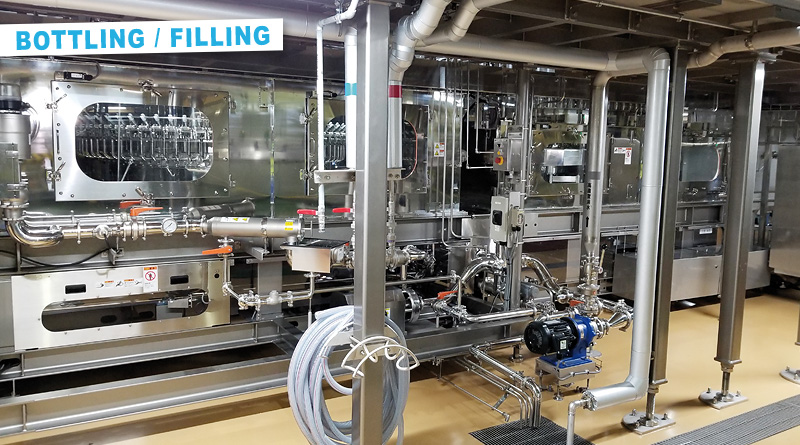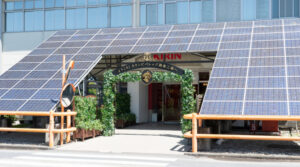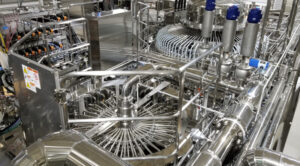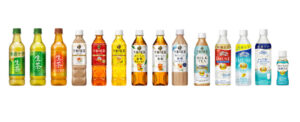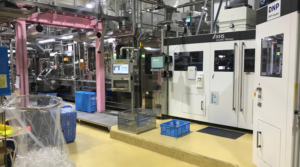Next generation of sustainable aseptic filling systems
The Kirin Beverage Company Co., Ltd. (KBC) Shonan factory upgraded two PET bottle aseptic filling lines in 2022 and 2023 respectively. This new system utilised Dai Nippon Printing Co., Ltd. (DNP) Two-Step Sterilisation, which enables high productivity, low cost and reduced environmental impact while maintaining high aseptic quality for low-acid beverages.
Relationship between KBC and DNP
The KBC Shonan factory is located in a privileged location about 50 km from the centre of Tokyo and has been producing beverages since 1973. In 1994, KBC and DNP jointly developed an aseptic PET bottle filling system that sterilises containers with hydrogen peroxide gas and began producing milk tea. Apart from this, KBC has manufactured a variety of products, including barley tea, green tea, lemon tea and functional beverages, and distributes them mainly in the Tokyo metropolitan area and to eastern Japan.
In 2008, KBC and DNP developed a synchronised system that directly connects a blow moulder with an aseptic filler. This was the first system in the world to utilise the heat remaining in the bottle after the blow moulding process for hydrogen peroxide gas sterilisation of the bottle. This synchronised system has since become the standard equipment for aseptic PET bottle filling systems in Japan and has also been installed in China, South Korea and Southeast Asian countries.
From 2021 onwards, the two PET bottle aseptic filling lines in operation at the KBC Shonan factory were to be upgraded sequentially. For this major equipment upgrade, KBC had three requirements. These were (1) highly productive high-speed lines, (2) energy and space savings, and (3) the ability to guarantee extremely reliable aseptic quality for low-acid beverages. To fully meet these requirements, Aseptic Systems (APS), the company in charge of DNP’s aseptic division, proposed a two-step sterilisation solution, which was adopted.
Features of DNP two-step sterilisation
The existing aseptic PET bottle filling line, installed in 2000, had a speed of 54,000 bph. The two-step sterilisation has successfully maintained this speed while reducing hydrogen peroxide, electricity, water consumption and footprint as well as saving manpower. There are five main reasons for this as follows:
- The stretch blow moulder and aseptic filler were integrated, and all air conveyors were removed.
- KHS’s stretch blow moulders were replaced by the latest energy-saving Series V.
- Utilising preform decontamination as the mainstay of container sterilisation and minimising bottle decontamination. As a result, hydrogen peroxide consumption for bottle decontamination was reduced by about 40% compared to the standard system. High sterility was achieved by decontaminating the preform and the bottle interior and exterior respectively. The total sterilisation effect of the two decontaminator is more than 9 LRV. It is also possible to adjust the sterilisation effect of preforms and bottles according to the guaranteed sterilisation level required for the product. For example, production can be carried out by preform decontamination only.
- Instead of a sterile water rinser, an inverted hot air rinser for bottles was installed. This hot air rinser simultaneously activates the hydrogen peroxide and removes foreign matter in the bottles.
- DNP’s new SIP (Sterilisation In Place) method ‘F0 Solution’ for the aseptic filler and liquid processing equipment was also installed. It was used in all aseptic tanks, UHT sterilisers, filling valves and filters for sterile air that perform SIP, reducing SIP time by about half. This not only reduces the amount of steam consumption and CO2 emissions, but also enables the aseptic filler to switch production in less than two hours. Increased productivity thanks to shorter SIP times and faster aseptic filling lines contributes to reduced TCO.
The DNP aseptic filling system for PET bottles can be used for high-speed bottle production, for up to 72,000 bph. Changeovers can be done in less than 2 hours. It has a smaller footprint, higher production efficiency and less energy consumption through Kaizen (big improvements – a management system developed in Japan, based on the idea that employees should be involved in continually improving products, services, etc. to make the company as successful as possible. Kai: change and Zen: for the better). It is claimed to be a very reliable and sustainable aspetic filling system.
DNP started to develop aseptic filling systems in 1972. DNP’s first aseptic filling machine launched in 1976 to produce single-use coffee creamer packs. The system was designed to allow the UHT sterilised coffee creamer to be filled and sealed in a hydrogen peroxide-sterilised lid and base within an aseptic chamber. This concept has been the basis for the development and sale of various aseptic filling systems (PET bottle, carton, cup, pouch, BIB, etc.) that use hydrogen peroxide sterilisation for the last 50 years. DNP will contribute to the development of an enrich and sustainable society by leveraging the aseptic technologies.

